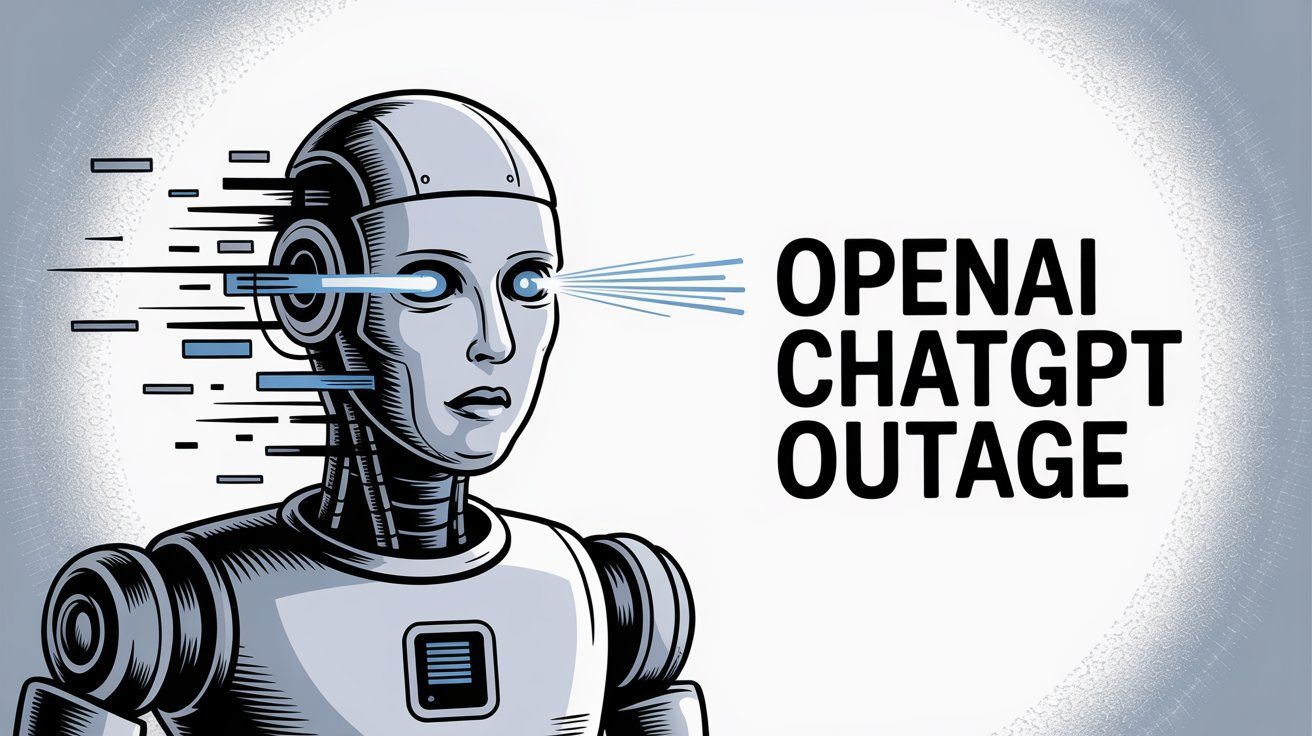
OpenAI ChatGPT Outage: Why It Happens and What to Do (2025)
Discuss with AI
Get instant insights and ask questions about this topic with AI assistants.
💡 Pro tip: All options include context about this blog post. Feel free to modify the prompt to ask more specific questions!
TL;DR: ChatGPT outages happen because of overwhelming demand, software bugs, infrastructure issues, and cloud dependency. When ChatGPT goes down, you're not alone (millions are affected). Your best move? Have backup AI tools ready (Claude, Gemini, or Spur's AI agents trained on your data), save your work externally, and build redundancy into your customer support stack before the next outage hits.
ChatGPT has become essential for millions of users. Students rely on it for research, developers use it to debug code, and businesses depend on it for customer support automation. So when ChatGPT goes down unexpectedly, it creates real disruption.
Recent outages have shown just how vulnerable we are to depending on a single AI platform. In June 2025, a massive 12-hour outage left users worldwide staring at error messages instead of getting work done. December 2024 saw a 9-hour outage caused by Microsoft Azure infrastructure failures.
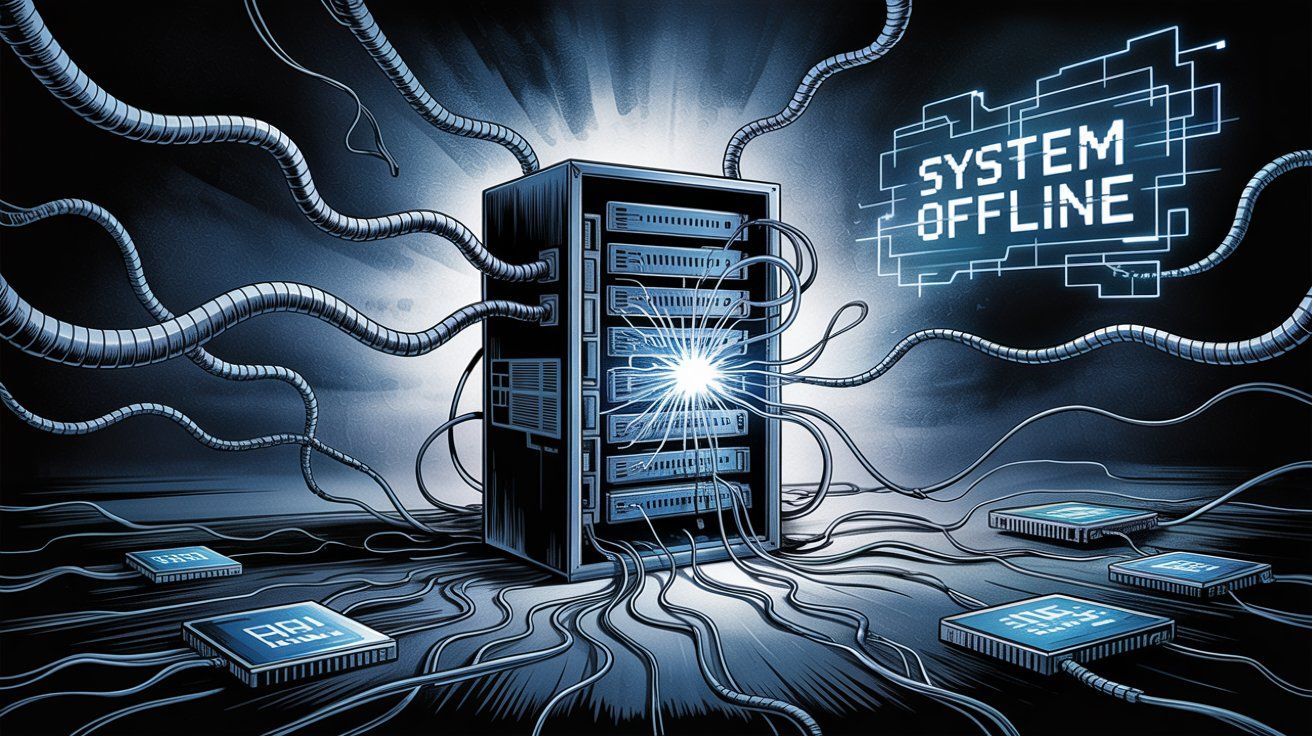
This guide breaks down why ChatGPT outages happen, documents major incidents since 2023, and (most importantly) shows you exactly what to do when ChatGPT goes offline. You'll learn how to build a resilient AI workflow that keeps your business running even when ChatGPT doesn't.
ChatGPT's uptime typically hovers around 99% according to OpenAI's status page, but several major disruptions have reminded us that no cloud service is invincible. Here's what actually happened:
OpenAI completely shut down ChatGPT for about 4 hours to fix a critical security vulnerability. A bug in an open-source library was accidentally exposing other users' chat titles and payment information.
The company took the drastic step of disabling chat history temporarily while they patched the security hole. Service was restored later that day, but some users lost access to parts of their conversation history during the recovery period.
Lesson: Security vulnerabilities can force emergency shutdowns. Your critical conversations should always be backed up externally.
A major 4.5-hour outage hit ALL OpenAI services simultaneously. ChatGPT, the API, and the newly launched Sora video generator all went dark due to a server configuration error that made many servers unavailable.
The outage started around 3:16 PM PST and wasn't resolved until 7:38 PM PST. OpenAI rolled back the faulty configuration and apologized for the disruption affecting millions of users globally.
Lesson: Even routine configuration changes can cascade into massive failures at scale.
This was a particularly frustrating outage because it wasn't even OpenAI's fault. An upstream provider issue (later confirmed as a Microsoft Azure datacenter power failure) knocked out ChatGPT for roughly 9 hours.
Reports spiked around 1:30 PM ET with "internal server error" messages, and service wasn't fully restored until around 11 PM ET after Azure fixed the power incident. Xbox cloud gaming users experienced similar problems, confirming the Azure infrastructure root cause.
Lesson: Cloud dependency creates vulnerability. When your infrastructure provider goes down, so do you.
The first half of 2025 saw several shorter disruptions:
• A minor login/memory glitch in January
• A 3-hour partial outage in March affecting Europe and Asia
• An April slowdown when a viral image-generation trend overloaded the system
• A May incident where a system update broke some API features
These were resolved relatively quickly (often within an hour or two) with limited global impact, but they signaled growing strain on OpenAI's infrastructure.
This was the big one. The worst ChatGPT outage to date affected users globally for over 12 hours.
It began around 2-3 AM PT and persisted well into the afternoon. OpenAI reported "elevated error rates and latency" across ChatGPT and the API. Users saw messages like "Something went wrong. Please try again" instead of responses.
Even OpenAI's CEO acknowledged the team's "GPUs are melting" under demand. The outage affected millions of people in the US, India, Europe and beyond. Social media exploded with #ChatGPTDown trending globally.
By mid-morning, OpenAI warned full recovery would take "another few hours", and service wasn't fully stable until that evening.
Lesson: Even the most critical AI services will have catastrophic failures. Your business cannot depend entirely on one platform.
Critical Insight: These incidents prove that ChatGPT outages are not rare anomalies. They're recurring events that businesses must plan for. The companies that survived these outages best were the ones with backup systems already in place.
Several interconnected factors can bring ChatGPT to its knees. Understanding these helps you plan better redundancy:
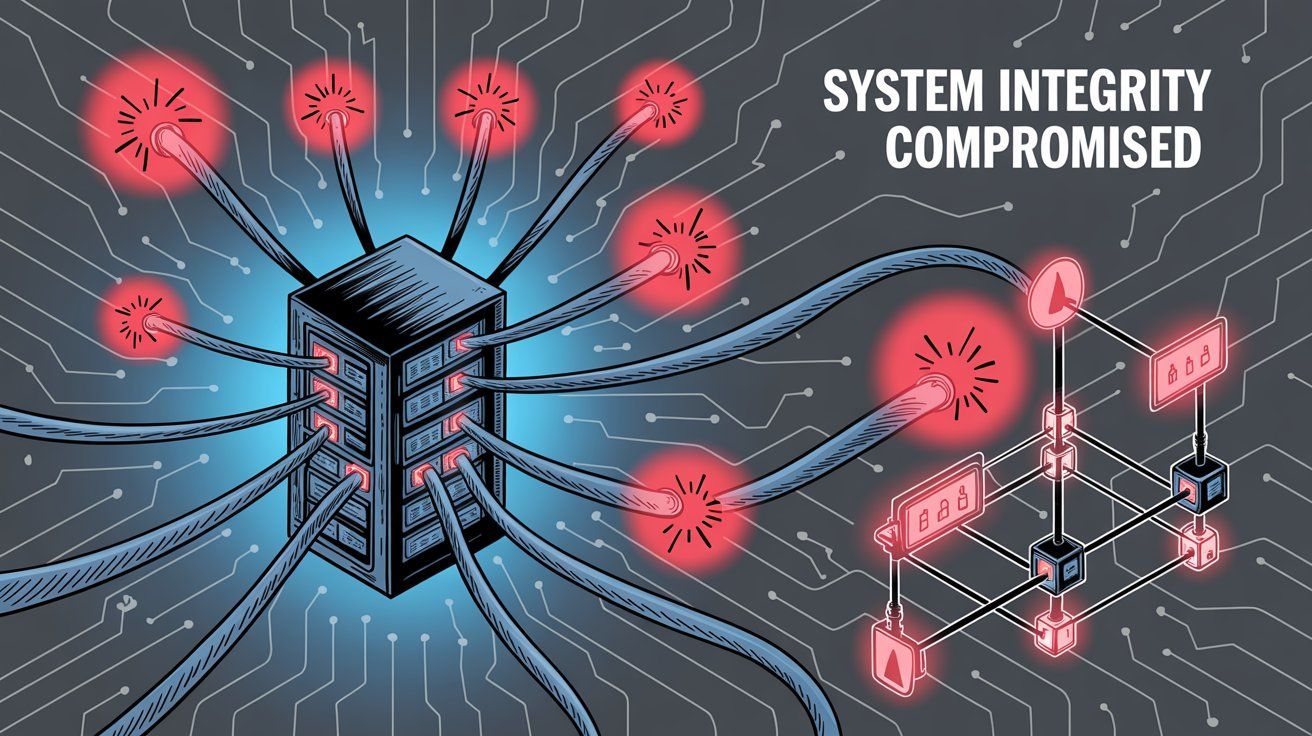
ChatGPT's explosive growth has created infrastructure challenges. When major features launch (GPT-4, image capabilities, voice features) or new use cases go viral, usage surges can overwhelm servers.
OpenAI's CEO Sam Altman joked about "melting GPUs" during the June 2025 outage, but there's truth behind the humor. When millions of users flood the service simultaneously, infrastructure hits capacity limits, leading to timeouts and errors.
Sometimes demand simply grows faster than the system can scale. This is particularly problematic because ChatGPT users tend to spike at similar times (workday hours, after major announcements, when a feature goes viral on social media).
ChatGPT is constantly evolving. OpenAI frequently deploys model upgrades and new features, but new code can introduce instability.
Several outages have been traced to deployments gone wrong or unexpected side effects of updates. For example, a misconfiguration in a global load balancer caused a brief API outage in December 2024.
Even routine changes (tweaking memory features, adding plugins, adjusting rate limits) carry risk at ChatGPT's massive scale. One misconfigured parameter can propagate across millions of requests instantly.
ChatGPT's architecture is fairly centralized. Core model servers handle enormous volumes of requests, which means a failure in one critical component (database, cache, messaging bus) can cascade broadly.
During the June 10, 2025 outage, OpenAI's status page showed 21 different ChatGPT components reporting problems simultaneously, indicating a systemic architectural issue rather than an isolated component failure.
While redundancies exist, they're not always sufficient to prevent complete service disruption. The centralized nature makes recovery slower because fixes need to propagate through the entire system.
OpenAI runs ChatGPT on Microsoft Azure's cloud infrastructure. When Azure has outages or network issues, ChatGPT can go down even if OpenAI's own software is functioning perfectly.
The December 26, 2024 incident is a perfect example: an Azure datacenter power failure knocked out ChatGPT for hours. OpenAI had to wait for Azure to fix power systems before service could be restored.
Relying on a single cloud provider creates a single point of failure. While OpenAI has been working on multi-region redundancy, complete geographic failover is challenging for models this large.
The March 2023 downtime was a proactive shutdown to fix a data leak bug. When OpenAI detects serious security breaches or abuse patterns, they might throttle or temporarily disable services to investigate.
OpenAI also enforces rate limits and protections against spam or DDoS attacks. If malicious actors bombard ChatGPT, it could lead to degraded performance or temporary outages while defenses activate.
Fortunately, there haven't been widely confirmed reports of attack-caused outages, but security remains a potential vulnerability point.
Sometimes the problem is simple human error. OpenAI's postmortem on the December 11, 2024 outage blamed a bad configuration change that made many servers unavailable.
In complex systems, a single typo in a configuration file or a mishandled deployment can have catastrophic consequences. The good news is these tend to be quickly fixable (rollback procedures can restore service within hours), but they remind us that even expert teams make mistakes.
The pattern is clear: ChatGPT outages happen for the same reasons any massive-scale web service fails. Overwhelming traffic, software bugs, infrastructure outages, and human errors are inevitable when you're serving hundreds of millions of users globally.
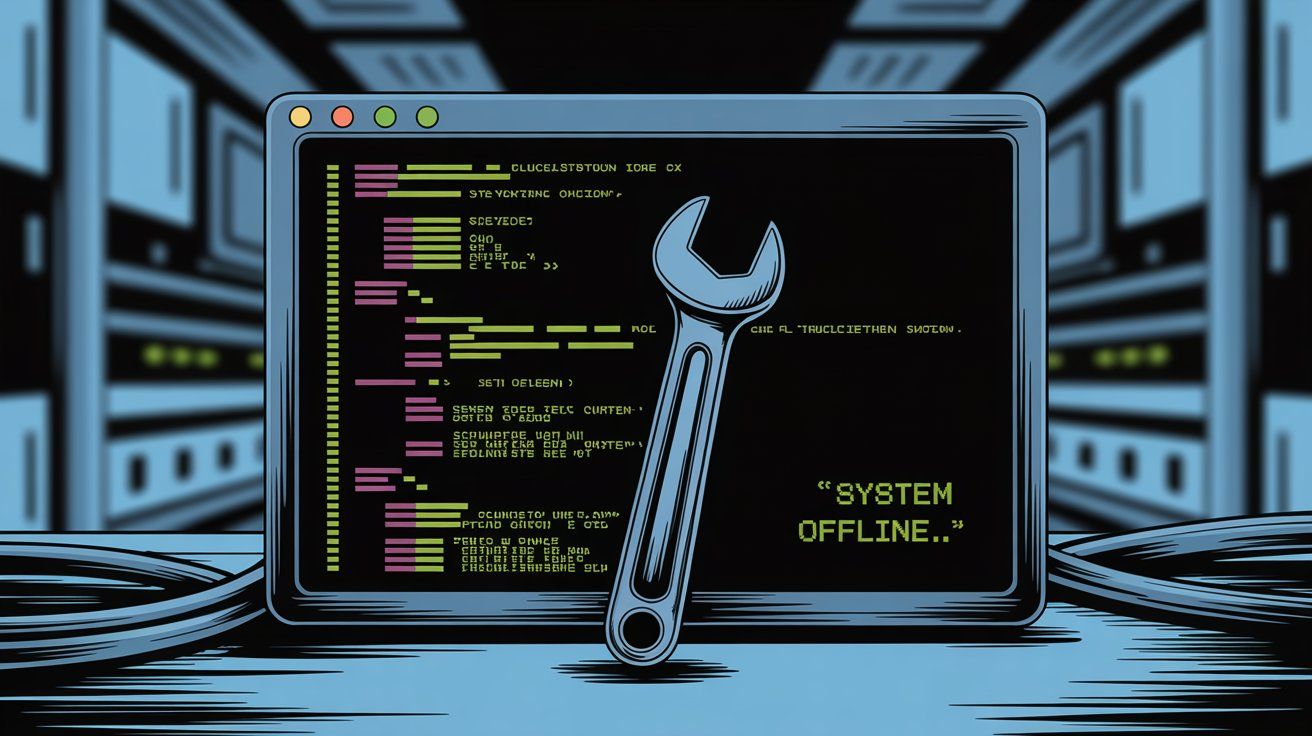
When ChatGPT stops responding, you need to determine quickly whether it's a widespread outage or an issue on your end. Here's your diagnostic checklist:
The first sign is usually ChatGPT failing to answer your prompt. Common error messages include:
• "Network error. Please check your connection and try again"
• "Something seems to have gone wrong"
• "Too many concurrent requests"
• "Internal server error"
These messages instead of actual responses indicate server-side problems. If they persist after 2-3 retries, it's likely not just a temporary hiccup.
ChatGPT Plus users might notice GPT-4 completely unresponsive while lighter models like GPT-3.5 either give partial answers or error out as well.
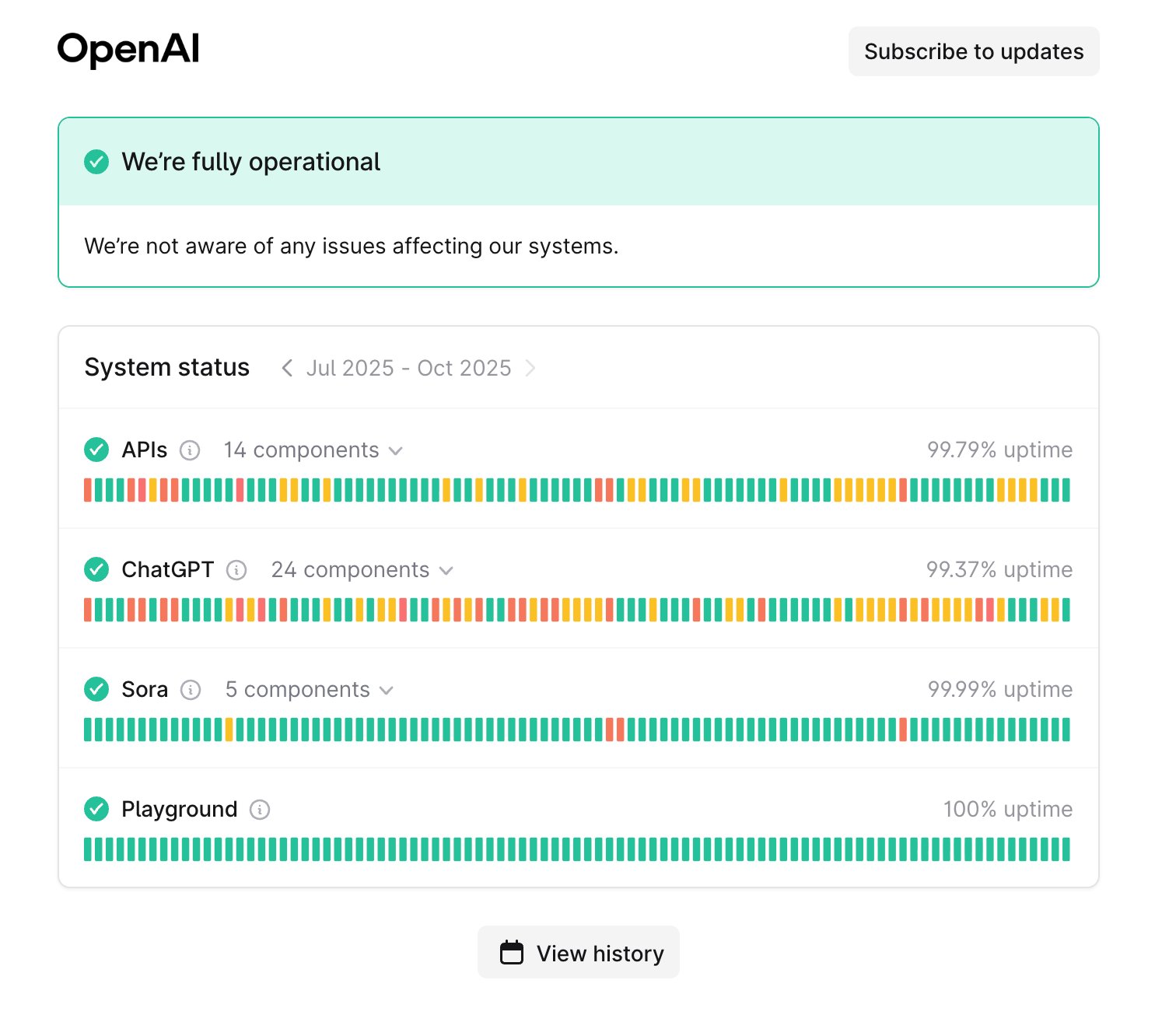
OpenAI maintains a real-time status page at status.openai.com. During known outages, this page will flag issues under ChatGPT with labels like "Degraded Performance" or "Partial Outage".
For example, on June 10, 2025, the status page acknowledged "elevated error rates and latency" with timestamped updates about fixes being implemented.
Look for yellow or red alerts. OpenAI also posts resolution notices when issues are fixed. You can subscribe to email or SMS updates to get notified of new incidents automatically.
Downdetector crowd-sources outage reports in real time. When ChatGPT is down globally, Downdetector will show a massive spike in problem reports.
During the June 2025 outage, Downdetector logged over a thousand reports within minutes of the service failing. The spike chart makes it immediately obvious whether the problem is widespread or just affecting you.
When ChatGPT goes down, users flood Twitter (X) and Reddit immediately. A quick search for "ChatGPT down" or "#ChatGPTDown" often reveals a storm of posts confirming the outage.
In fact, "ChatGPT Down" frequently trends during major incidents. The official @OpenAI account on X sometimes posts acknowledgments like "We're experiencing an outage... we've identified the issue and are working on a fix".
On Reddit, the r/ChatGPT subreddit usually has sticky threads during outages where moderators and users share information and workarounds.
If many people are reporting identical errors, the outage is confirmed. Conversely, if nobody else is talking about ChatGPT being down, the problem might be your internet connection or device.
Try multiple entry points:
→ Mobile app vs web interface: Sometimes one works when the other doesn't
→ Different models: Switch from GPT-4 to GPT-3.5 or vice versa
→ API access: If you have API credentials, test a simple API call
→ Fresh session: Start a new chat thread instead of continuing an existing one
In past incidents, some users found that while GPT-4 was unresponsive, simpler models could still handle basic prompts, albeit slowly.
If nothing works across multiple devices and network connections, it's almost certainly a broad outage. Time to activate your backup plan.
Before we dive into solutions, let's recognize the real-world consequences of ChatGPT outages:
You're completely locked out of the AI assistant you've integrated into your workflow. Both free and paid ChatGPT Plus users experience identical disruptions during major outages. Plus subscribers normally get priority access, but when the entire service is impaired, priority means nothing.
You might lose the context of your current session, especially if the outage forces a refresh or logout. Features like image uploads, voice interaction, and plugins will be unavailable if the core chat service is down.
If you've built a product or workflow that calls OpenAI's API (customer support bots, AI writing assistants, automated summarization tools), those API calls start failing immediately.
Companies reported "drastic slowdowns" during 2025 outages, with marketing tools and helpdesk bots built on ChatGPT APIs having to failover to human support. In client-facing scenarios, this results in downtime messages or degraded experiences for your customers, potentially hurting your reputation.
This is where having alternatives like Spur's AI agents becomes critical. Spur operates independently of ChatGPT's infrastructure, so when OpenAI goes down, Spur's customer support automation keeps running. Businesses using Spur for WhatsApp, Instagram, and Live Chat automation can maintain service continuity even during ChatGPT outages.
If ChatGPT crashes mid-task, any unsaved content is at risk. Say you had it drafting a long document or analyzing data and the outage hit. You might not retrieve that response or conversation history after refreshing.
In the March 2023 incident, some users lost access to parts of their chat history. ChatGPT doesn't autosave your work outside its own interface, so outages can effectively wipe the last output you saw if you didn't copy it.
Many people have woven ChatGPT into their daily workflow. A journalist during the June 2025 outage noted that tasks like summarizing transcripts or drafting user stories suddenly had to be done manually: "doing those things manually is not nearly as efficient, so today could really suck."
If you're relying on it to meet deadlines, you might find yourself scrambling for alternatives with no preparation.
Users have expressed everything from mild annoyance to outright panic during outages. It's a testament to how quickly we've grown accustomed to having AI assistance on demand.
Social media fills with frustrated posts. Thousands of users vent on platforms like Twitter while feverishly hitting "retry."
The key is not to panic. Switch to alternatives and workarounds immediately. Let's explore those now.
ChatGPT is confirmed down. How do you get work done? Here's your action plan:
The good news: ChatGPT isn't the only AI available. Several robust alternatives can step in immediately:
Google Gemini (formerly Bard)
Google's Gemini is a strong general-purpose chatbot great for quick answers with the advantage of up-to-date web information. It excels at summarization and straightforward Q&A, and by late 2025 it's integrated into many Google products.
Anthropic Claude
Claude is known for lengthy, thoughtful responses and a larger context window (it can handle longer documents and questions). It excels at analytical tasks and creative brainstorming.
Users often keep Claude as a backup because it can pick up slack when ChatGPT is overloaded. Claude has both free and paid versions accessible via API or interfaces like Slack.
Microsoft Bing Chat / Copilot
Microsoft's Bing Chat is powered by OpenAI's GPT-4 but runs on Microsoft's own infrastructure. Occasionally Bing Chat remains available even if ChatGPT is down because of different server allocations.
Microsoft's Copilot provides a "premium ChatGPT-like experience" with additional features like image creation.
xAI Grok
Grok is designed to have up-to-date information with a witty personality. During the June 2025 outage, Grok cheekily responded that "today, Grok is more reliable due to the outage" when users asked about ChatGPT's downtime. It's a capable fallback for general questions and coding help.
DeepSeek and Open-Source Alternatives
DeepSeek offers strong reasoning and coding skills. Open-source models like Llama 2 are accessible through platforms like Hugging Face or Poe. For tech-savvy users, these can handle simpler queries locally without depending on external services.
Pro Tip: Bookmark at least 2-3 backup AI platforms BEFORE an outage strikes. Many experienced users maintain a rotation of AI tools to avoid single-platform dependency.
If you're a business that depends on AI for customer support, you need infrastructure that works INDEPENDENTLY of ChatGPT.
Spur provides actionable AI agents specifically designed for customer engagement across WhatsApp, Instagram, Facebook Messenger, and Live Chat. Unlike chatbots that simply rely on ChatGPT's API, Spur trains AI agents on YOUR knowledge base and deploys them on YOUR infrastructure.
Why Spur Works When ChatGPT Doesn't:
Feature | ChatGPT | |
|---|---|---|
Infrastructure Dependency | Centralized OpenAI servers | Independent multi-channel platform |
Knowledge Base Training | Generic pre-trained model | |
Channel Support | Web/mobile chat only | WhatsApp, Instagram, Facebook, Live Chat |
Failover to Humans | No built-in handoff | Automatic routing to shared inbox |
Marketing Automation | Limited | Full campaign automation + broadcasts |
When ChatGPT goes down, businesses using Spur continue handling customer inquiries seamlessly because Spur's AI agents operate independently. The system automatically routes complex queries to human agents in the shared inbox, ensuring zero disruption in customer experience.
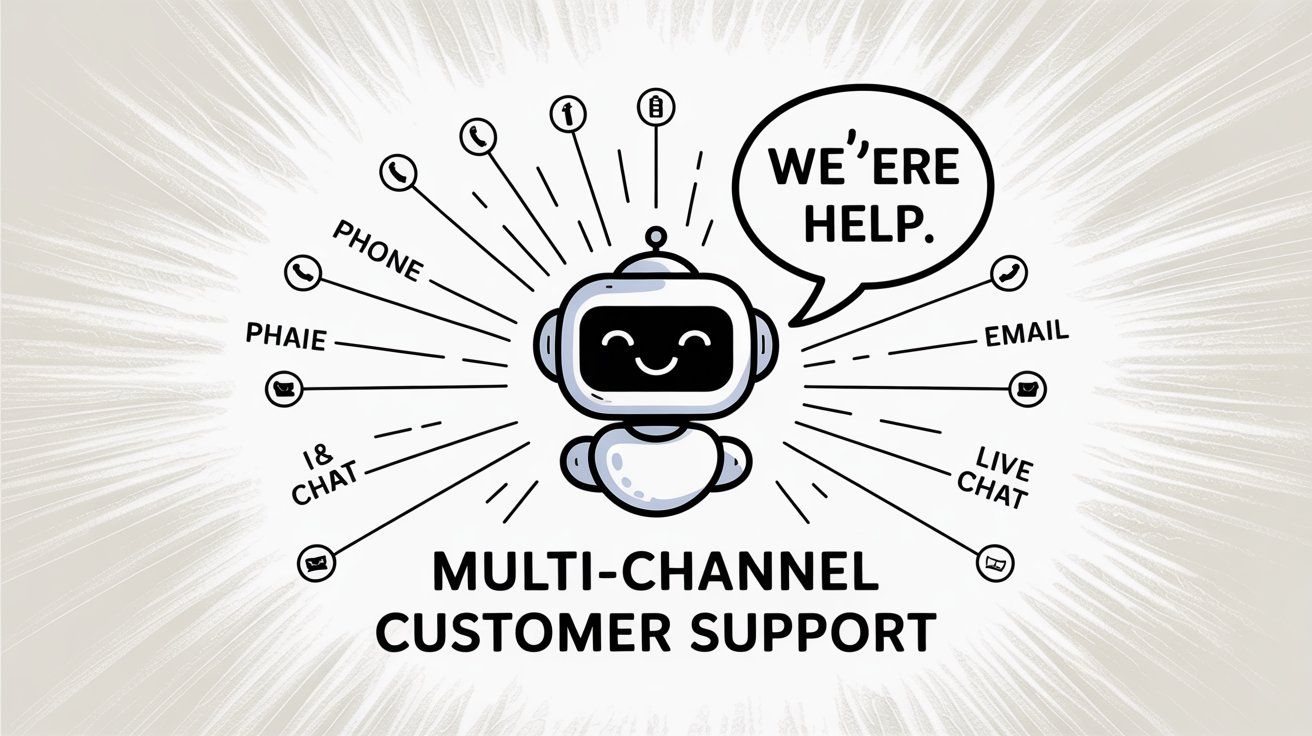
Get started with Spur's 7-day free trial →
Sometimes only certain aspects of ChatGPT are down. Test multiple entry points:
→ Web UI not responding? Try the mobile app (different server pool)
→ Long conversation glitching? Start a fresh chat to bypass some issues
→ Region-specific problems? Try a VPN to a different geographic region
These workarounds won't help during full outages, but they can get you through partial disruptions.
Sometimes you must embrace old-school methods:
→ Writing tasks: Start drafting manually, plan to polish with AI later
→ Code debugging: Search documentation, Stack Overflow, or programming forums
→ Research questions: Use traditional Google search to gather information manually
While these methods are slower, they keep you progressing on critical tasks. Don't let the outage completely paralyze your productivity.
For businesses, ensure your customer support workflow has human backup:
→ Automatic failover: Configure your chatbot platform to route conversations to human agents when the AI doesn't respond
→ Status page notices: Put up a banner like "Our AI assistant is temporarily unavailable, but our team is here to help"
→ Internal communication: Alert your team about the outage so they can adjust expectations and workload
Platforms like Spur make this easy with built-in escalation workflows. When AI agents can't handle a query, they automatically transfer conversations to your team's shared inbox with full context preservation.
Keep one eye on OpenAI's status page while working on alternatives. The outage might clear sooner than expected, with updates like "Root cause identified, implementing a mitigation".
Subscribe to status notifications so you'll be alerted immediately when service is restored. This helps you plan whether to invest more time in workarounds or wait for recovery.
Don't brute-force ChatGPT while it's down. Repeatedly sending requests hoping one goes through just frustrates you and adds to system load. Better to spend that energy on productive alternatives.
A little preparation transforms ChatGPT outages from crises into minor inconveniences. Here's your comprehensive preparation checklist:
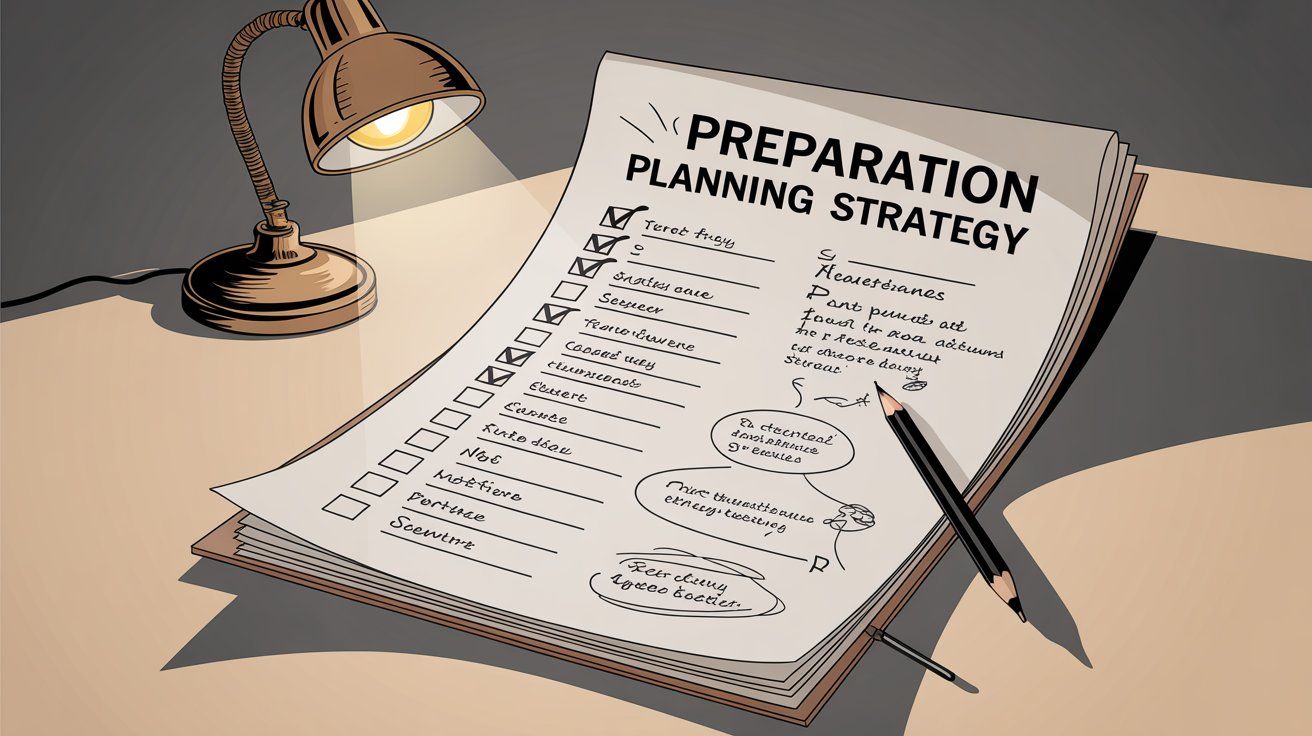
Never rely on a single AI service. Before any outage happens:
✓ Sign up for accounts on 2-3 alternative chatbots (Claude, Gemini, etc.)
✓ Create a bookmark folder called "AI Backups" with direct links
✓ Test each alternative during normal times to understand their strengths
✓ Find browser extensions or apps for quick access
Think of it like having both Google and Bing for search. Diversification protects you from single-platform failures.
For businesses, consumer AI chatbots aren't enough. You need infrastructure designed for reliability:
Spur provides enterprise-grade AI automation that:
• Trains on YOUR knowledge base (not generic internet data)
• Operates independently of ChatGPT's infrastructure
• Spans multiple channels (WhatsApp, Instagram, Facebook, Live Chat)
• Includes automatic human escalation when AI can't handle queries
• Provides marketing automation, broadcasts, and CRM integration
Spur's multi-channel approach means if one communication channel experiences issues, your customers can reach you through others. The shared inbox ensures human agents can seamlessly take over when needed.
Compare your current setup:
Your Business Needs | ChatGPT API Only | Spur Platform |
|---|---|---|
Works during ChatGPT outages | ❌ No | ✅ Yes |
Custom knowledge training | ❌ Generic only | ✅ Your data |
Multi-channel support | ❌ Chat only | ✅ WhatsApp + IG + FB + Web |
Automatic human handoff | ❌ Manual setup | ✅ Built-in |
Marketing automation | ❌ None | ✅ Full suite |
See how Spur keeps businesses running during outages →
Treat ChatGPT as ephemeral. At any time it could log you out or lose context.
For important conversations:
• Copy the full text to your notes app or Google Doc immediately
• Export ChatGPT data regularly using the built-in export feature
• Don't trust chat history will persist, especially during or after outages
Maintain a prompt library:
Keep a document with your favorite prompts and instructions. If you spent 15 minutes crafting the perfect prompt for a task, don't trust it will stay in ChatGPT's history forever.
This serves two purposes: (1) If ChatGPT goes down mid-conversation, you have a record. (2) You can feed those prompts into alternative AIs without starting from scratch.
If an outage clears all context or you move to a new AI platform, have a pre-written introduction ready:
Example cold-start prompt:
"You're helping me write technical blog posts for a business audience. Keep the tone conversational, clear, and informative. Focus on practical advice rather than theory. Avoid jargon unless necessary, and explain technical concepts simply."
This quickly brings any AI up to speed on your style and goals, avoiding wasted time re-training after an outage erased custom instructions.
If you're integrating ChatGPT into applications via API, add basic failover:
Simple failover pseudocode:
if openai_api_call fails X consecutive times: try backup_ai_api (Claude, Gemini, etc.) if backup_ai_api also fails: serve cached response OR route to human support with message: "Sorry, I'm having trouble right now. Let me get a human to help."
Some businesses use multiple AI providers specifically for reliability. It's like having redundant internet providers in case one goes out.
The growing user dependency on ChatGPT makes failover planning essential for any customer-facing application.
Go to OpenAI's status page and subscribe to updates for ChatGPT. You'll get email or SMS alerts as soon as outages are declared, allowing you to enact your backup plan immediately.
Similarly, follow tech outage accounts on Twitter/X that often tweet about service disruptions. The faster you know, the faster you can pivot.
Don't wait for an outage to discover your backup plan doesn't work.
Schedule quarterly "fire drills" where you:
• Pretend ChatGPT is down for 4 hours
• Switch all workflows to backup AI platforms
• Test business failover processes (human escalation, status pages, etc.)
• Document what worked and what needs improvement
Companies that sailed through recent outages were the ones who had already practiced their backup procedures. The ones that struggled were discovering their failover gaps in real-time under pressure.
Critical Preparation: The best time to prepare for a ChatGPT outage is when ChatGPT is working perfectly. Build redundancy NOW so you're not scrambling later.
Once OpenAI announces ChatGPT is back online and "fully operational," don't immediately trust everything is perfect. Take these verification steps:
Ask ChatGPT a diagnostic question like "Are all features back online now?" to check if tools like Vision, voice, file uploads, or plugins are working again.
Sometimes OpenAI re-enables features gradually, so basic chat might work while advanced features are still recovering.
If the outage interrupted an important conversation, scroll up to your last prompt and send it again. This helps restore context in case the system forgot where you left off.
Often ChatGPT treats the resumed session as brand new, so re-sending your last query reminds it of the topic.
Navigate to the sidebar and ensure your previous chats are still listed. After some outages, users found recent conversation histories were missing or showing errors.
Usually they return once OpenAI fully restores systems, but if a critical chat is missing, use your external backup copy if you created one.
ChatGPT Plus offers custom instructions and preferences. After an outage, verify these settings didn't revert or get disabled.
Go into your Customize Instructions section and confirm preferences are still there and active. If you had plugins enabled, ensure they're still enabled.
If you use beta "long-term memory" features or Custom GPTs, test them. Ask something the AI could only answer if it remembered your past context.
If it comes up blank or gets it wrong, the session memory was wiped or your custom GPT lost its state. You might need to re-upload knowledge bases or reset context.
Even after "full recovery," the system might be under strain as millions pile back in. Expect potential slowness or occasional errors until traffic normalizes.
Give it simple tasks first to ensure stability before handing it critical work. It's like merging onto a busy highway after an accident - there's often residual congestion.
Take a moment to evaluate how the outage affected you:
• Did it totally derail you, or were you able to manage with backups?
• What worked well in your backup plan?
• What gaps did you discover?
Use each outage as a learning opportunity to refine your preparedness. Treat them as fire drills for improving your response next time.
You might wonder: Are these frequent events or rare anomalies?
2023: Outages were relatively rare and usually short. Apart from the March 2023 security shutdown, most users didn't experience frequent downtime. There were occasional "ChatGPT is at capacity" notices before ChatGPT Plus launched, but outright outages were infrequent.
2024: As ChatGPT's user base exploded and OpenAI rolled out more features, outage frequency increased slightly. Major global outages could be counted on one hand, with a couple in December 2024 when usage was extremely high during feature launches. OpenAI's status history shows scattered incidents of brief downtime through the year.
2025: Outages became more frequent (though still not daily). By mid-2025, there had been five notable disruptions including the catastrophic June 10 incident.
OpenAI's uptime metrics for ChatGPT hover around 99.3%, which sounds high but implies roughly 0.7% downtime - about 5 hours per month on average. Those hours might come all at once (like the June incident) or split across minor blips.
ChatGPT outages are not everyday events, but they're not rare either. You might go months without seeing one, then get hit by a 12-hour disruption without warning.
OpenAI is actively working to improve reliability by adding more servers, optimizing code, and exploring multi-region hosting. But as they push new updates (GPT-5, more integrations) and bear increasing load, some hiccups are inevitable.
The smart approach: Prepare for downtime like you prepare for power outages. You might never need the backup generator, but you'll be grateful it's there when the lights go out.
ChatGPT has become indispensable for millions of users worldwide. It powers everything from individual productivity to enterprise customer support. But as we've seen repeatedly, outages WILL happen.
The lessons are clear:
• Outages are recurring events, not anomalies. Since 2023, we've seen multiple major disruptions lasting hours or longer.
• Single-platform dependency is dangerous. When ChatGPT goes down, businesses without backup systems face complete disruption.
• Preparation beats panic. The companies that survived recent outages best were the ones with alternative AI platforms and failover processes already in place.
For Individual Users:
① Bookmark 2-3 alternative AI chatbots (Claude, Gemini, Grok)
② Save important conversations and prompts externally
③ Subscribe to OpenAI's status alerts
④ Create cold-start templates for quick AI context restoration
For Businesses:
① Build infrastructure independence. Don't rely solely on ChatGPT's API for customer-facing automation.
② Put in place multi-channel support. Platforms like Spur provide AI automation across WhatsApp, Instagram, Facebook, and Live Chat with built-in human escalation.
③ Train AI on YOUR data. Spur trains actionable AI agents on your specific knowledge base, unlike generic ChatGPT setups.
④ Test your failover plan quarterly. Don't discover gaps during a real outage when customers are waiting.
What You Need | ChatGPT-Only Approach | Spur Platform |
|---|---|---|
Works during ChatGPT outages | ❌ Complete failure | ✅ Independent operation |
Custom knowledge training | ❌ Generic responses | ✅ Your business data |
Multi-channel coverage | ❌ Web chat only | ✅ WhatsApp + IG + FB + Web |
Automatic human handoff | ❌ Manual routing | ✅ Built-in escalation |
Marketing automation | ❌ None | ✅ Broadcasts + campaigns |
See how Spur keeps businesses running during AI outages →
OpenAI will continue improving ChatGPT's reliability. Every outage teaches lessons that (hopefully) make the system stronger. But prudent users and businesses will plan for downtime.
Think of AI assistants like you think of internet connections. You appreciate when they work flawlessly, but you keep a mobile hotspot ready just in case. You don't put all your critical operations on a single connection with no backup.
The same principle applies to AI platforms. Diversify. Prepare. Test. Build redundancy BEFORE the next outage hits.
Next time you see "unable to fetch" errors or Twitter fills with #ChatGPTDown posts, you'll be ready. Check the status page, switch to your backup AI tools, and keep working. The outage might affect millions, but it won't stop YOU.
Your business continuity depends on preparation, not hope.
Start your free 7-day trial with Spur to build outage-resistant customer support →
Most minor outages resolve within 1-2 hours. But major incidents can last significantly longer. The March 2023 security shutdown lasted about 4 hours, the December 11, 2024 configuration error took 4.5 hours, the December 26, 2024 Azure power failure lasted 9 hours, and the June 10, 2025 incident exceeded 12 hours. There's no reliable way to predict duration until OpenAI identifies the root cause and posts recovery estimates on their status page.
Not meaningfully. Both free and paid ChatGPT Plus users experience identical disruptions during major outages. Plus subscribers get priority access during normal high-traffic periods, but when the entire service is impaired, priority means nothing. Everyone waits for engineers to restore service.
Unlikely. OpenAI's Terms of Service state that subscriptions and fees are generally non-refundable. While they strive for high uptime, they don't offer automatic credits or refunds for outages. If you feel a particular outage significantly impacted your subscription value, you could contact OpenAI support to request compensation, but there's no guarantee they'll provide it.
Yes, by saving conversations externally. Use ChatGPT's built-in data export feature periodically, or manually copy-paste important conversations to your notes app or documents. During and after some outages, users found conversation histories temporarily missing. Having external backups ensures you don't lose critical work if ChatGPT's history gets disrupted.
It depends on your use case. Claude excels at long-form analysis and coding, Google Gemini is great for factual questions with up-to-date information, Bing Chat/Copilot provides GPT-4 access on Microsoft infrastructure, and xAI Grok offers personality plus current events. For businesses, Spur provides enterprise-grade AI trained on your knowledge base with multi-channel deployment that operates independently of ChatGPT. The best strategy is having 2-3 backups bookmarked so you can choose based on the specific task.
Businesses should set up multi-layered redundancy. Use platforms like Spur that provide AI agents independent of ChatGPT's infrastructure, with automatic escalation to human agents when AI can't respond. Build failover logic in your application to call alternative AI APIs if OpenAI fails. Always have a "route to human support" path with appropriate messaging like "Our AI assistant is temporarily unavailable, but our team is here to help." Test these failover systems quarterly to ensure they work when needed.
Check multiple sources: (1) Visit OpenAI's status page at status.openai.com to see if they've acknowledged issues. (2) Check Downdetector for spike in user reports. (3) Search Twitter/X for "#ChatGPTDown" to see if others are reporting problems. (4) Try accessing ChatGPT from a different device or network. If status page shows issues and social media is flooded with complaints, it's a widespread outage not your connection.
Several factors contribute: (1) Unprecedented demand growth that sometimes exceeds infrastructure capacity. (2) Complex AI infrastructure with many interconnected components where one failure can cascade. (3) Frequent updates and new features that can introduce bugs. (4) Dependency on Azure cloud infrastructure, so Azure problems become ChatGPT problems. As OpenAI scales and matures, uptime should improve, but the massive scale and rapid evolution create challenges most services don't face.
That depends on your tolerance and alternatives. If outages significantly impact your critical work and you have no backup plan, consider whether the subscription value justifies the occasional disruption. But rather than canceling, a smarter approach is building redundancy: keep ChatGPT Plus for its benefits during normal operation, but also have backup AI platforms ready. For businesses, supplement ChatGPT with enterprise solutions like Spur that provide independent infrastructure and failover capabilities.
OpenAI typically doesn't schedule planned maintenance that takes ChatGPT completely offline. Most updates and improvements happen with rolling deployments designed to avoid downtime. But if planned maintenance is necessary, they'll post advance notice on their status page (usually 24-48 hours ahead) and via email to registered users. The vast majority of outages documented here were unplanned incidents, not scheduled maintenance.
Unlikely to succeed. OpenAI's Terms of Service include limitations of liability and disclaimers about uptime guarantees. They provide service "as is" without guarantees of uninterrupted availability. For business-critical applications, companies should not rely solely on ChatGPT without building their own redundancy and failover systems. If uptime guarantees are essential for your business, consider enterprise agreements with defined SLAs, or use platforms like Spur that provide independent infrastructure for mission-critical customer communication.
Follow this post-recovery checklist: (1) Test all features you use with a diagnostic question. (2) Re-send your last interrupted prompt to restore context. (3) Verify your conversation history is intact. (4) Check that custom settings and preferences didn't reset. (5) Start with simple tasks before resuming critical work to ensure stability. (6) Review how the outage affected you and improve your backup plan based on gaps you discovered.
